It’s a wild and wonderful place that few of us will ever be lucky enough to visit.
But fortunately, Tasmanians who have been to Antarctica are happy to share their tales of adventure, bringing a taste of the coldest, windiest place on earth to the wider population as part of the upcoming Australian Antarctic Festival in Hobart.
Running over five days – from August 24-28 – the biennial festival will include open days, art and photography exhibitions, tours, lectures and even an Antarctic-themed opera – and most events are free for curious members of the public to enjoy.
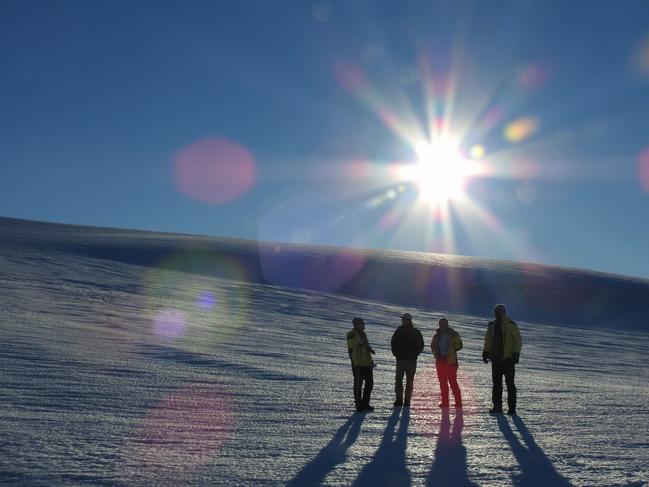
The aim is to give an insight into the beauty of Antarctica, the science that is carried out there, the rich history of the place, the partnerships between various organisations such as CSIRO, the University of Tasmania and the Australian Antarctic Division, and ultimately celebrate the cultural and economic significance of Hobart’s unique position as Australia’s Antarctic gateway.
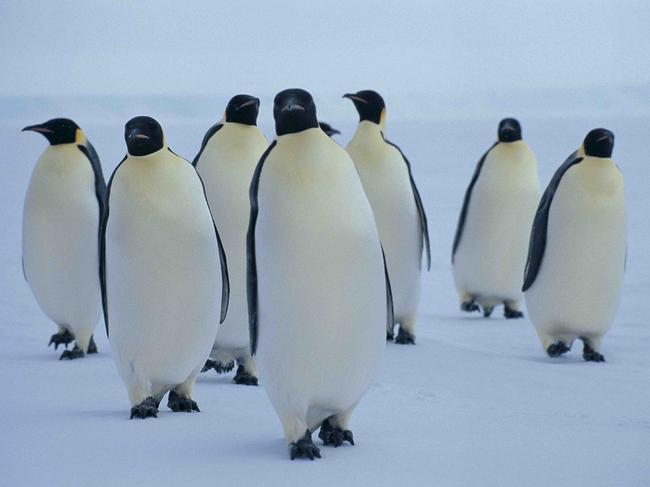
And central to this is, of course, are the people – the adventurous expeditioners who have ventured to some of the world’s most remote locations, and those who are committed to exploring and protecting the huge frozen landmass at the bottom of our planet, in bid to better understand the world we live in and predict the environmental challenges we may face in the future.
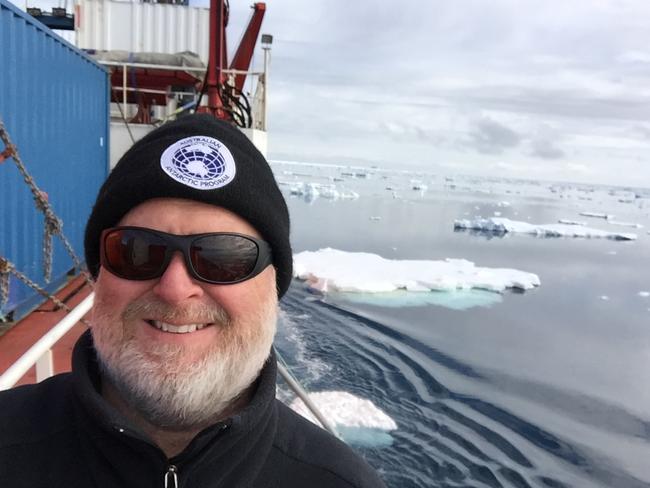
DAVID KILLICK
David Killick was working as a journalist for news service Australian Associated Press in 1997 when an opportunity came up to visit Antarctica through the Mawson’s Huts Foundation.
“They were looking for a journalist who had a second set of skills,’’ recalls Killick, who is now a senior Mercury journalist in Hobart.
And, given he was also a qualified chef – a skill that would obviously be handy for feeding hungry expeditioners in remote Antarctica – he got the job.
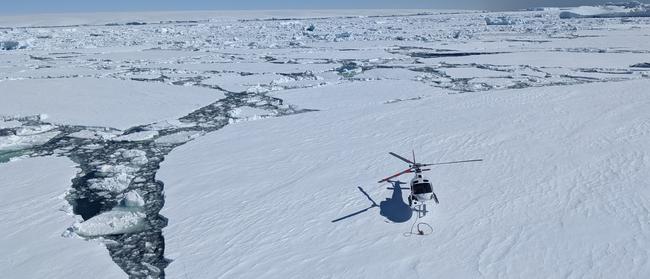
That was his first of six expeditions to Commonwealth Bay, about 2500km south of Hobart, with the most recent trip in December last year.
He was one of five people on that recent expedition, travelling on French ship L’Astrolabe before being flown by helicopter to Cape Denison where they spent four weeks retracing the footsteps of explorer Sir Douglas Mawson, living in the harshest environment on earth to help protect relics left behind by early Antarctic explorers.
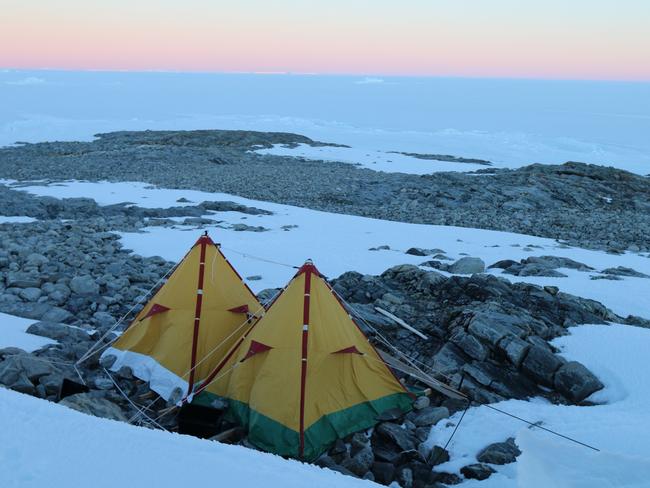
Mawson’s Huts are a collection of wooden buildings constructed during the 1911-14 Australasian Antarctic Expedition at Cape Denison.
The huts need regular maintenance to ensure they survive the harsh weather conditions.
Killick and his team camped in polar pyramid tents surrounding a basic mess building on the Antarctic coastline hundreds of kilometres from the nearest Australian base, taking advantage of the 24-hour sunlight during the Antarctic summer to carry out conservation work, erect an automatic weather station and conduct surveys of the area’s penguin population.
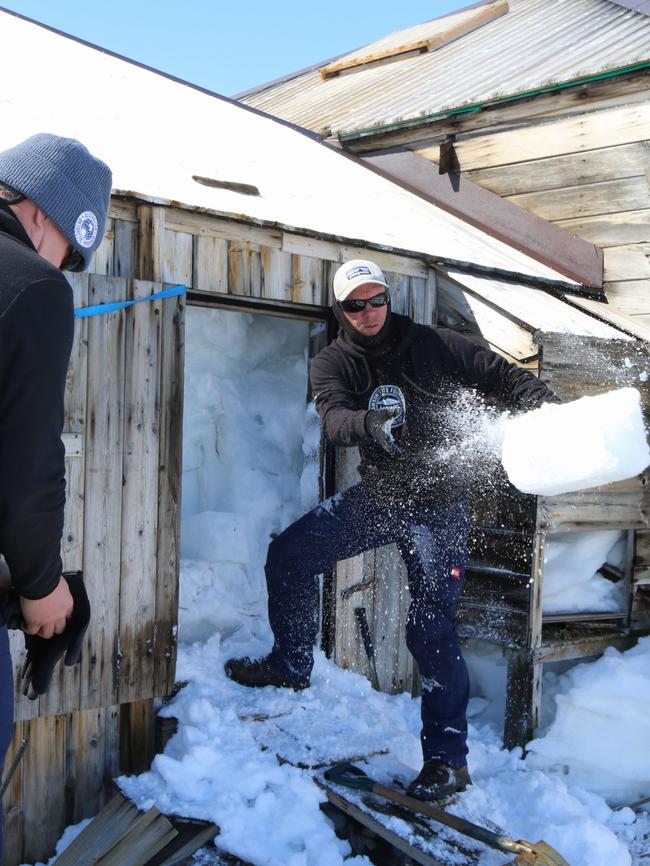
“My job this time was running the communications equipment, photography, cooking, storeman and weather observer,’’ the 54-year-old says.
“I also did a penguin count and we built an automatic weather station for an American university.
“Everyone needs to be multiskilled, everyone has five or six different jobs.’’
Other less glamorous jobs include emptying toilets and collecting penguin poo samples.
Killick says although trips to Antarctica come with risks, and teams need to be skilled and well prepared, it’s also exciting to be in a new environment, far from the familiar routine of daily life.
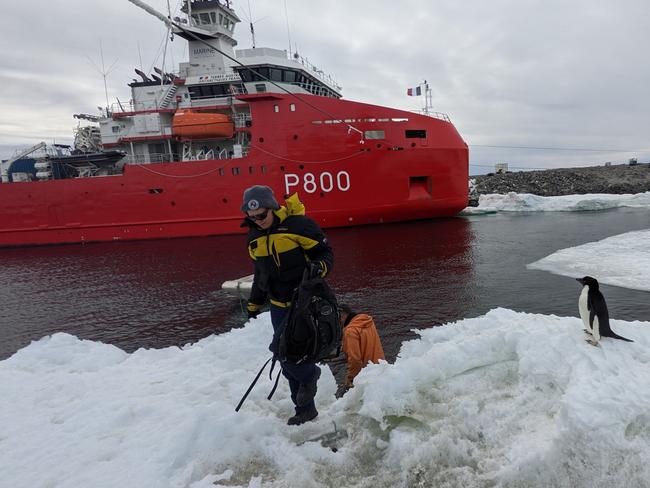
“There’s never a dull moment, there’s always something to do,’’ Killick says.
“And it’s amazing what you miss and what you don’t miss.
“The phone doesn’t ring, there’s no access to social media. We have access to emails, so you might check emails once a day using satellite communications. There’s no Facebook, no Twitter, there’s no news. There’s no money, and nothing to spend money on. All you have to worry about is falling over and breaking something, falling through the ice, being attacked by a seal, getting frost bite or getting lost in a blizzard.’’
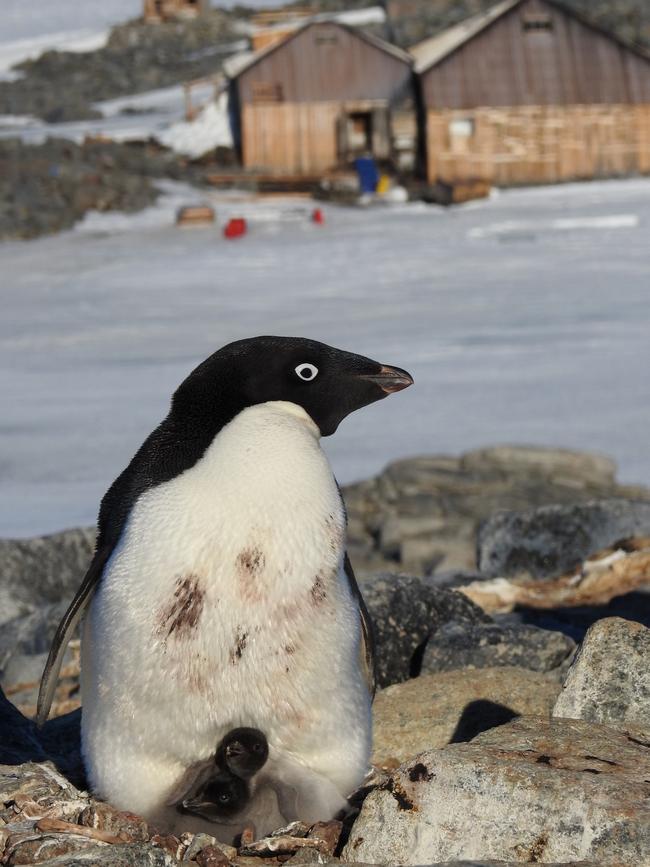
Photos taken by Killick and other expeditioners on the recent Cape Denison trip will be showcased at TMAG’s Bond Store from August 25 to September 4 (closed Mondays) as part of the Australian Antarctic Festival.
“A lot of people in Hobart would know someone who has been south,’’ he says.
“But it’s still a place most people haven’t been.
“It’s a place that really excites the imagination and we’re always acutely conscious of how lucky we are and we wander around every day, and say ‘aren’t we lucky to be here and isn’t this just fantastic’.
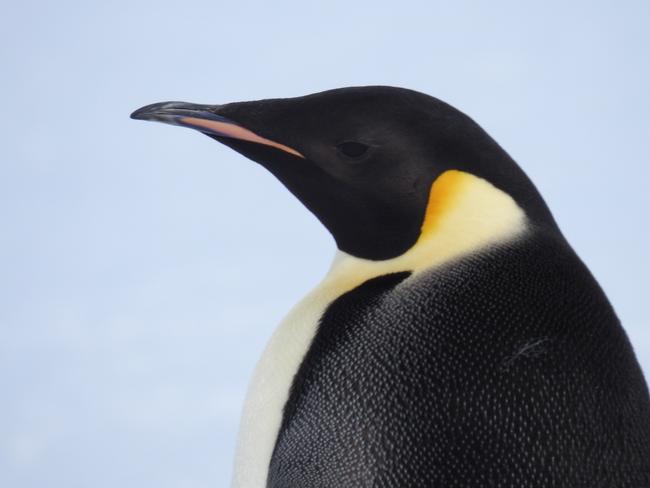
“We’ve got all these great photos, so it’s just a great opportunity to share them and promote the work of the foundation.
“It’s also part of the history of Commonwealth Bay, we’re recording a living, breathing heritage site that tells a story about Australia’s first Antarctic expedition.’’
Like many who have been to Antarctica, Killick continues to return.
“It definitely gets under your skin,’’ he says.
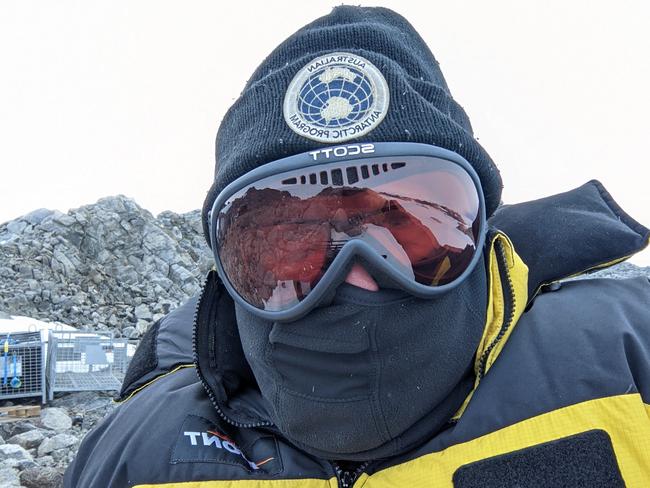
“It changes you forever, you’re never the same. You learn a lot about yourself and your own resilience and resourcefulness and your ability to maintain a sunny disposition under difficult circumstances. But it’s also just such an astonishingly beautiful and unspoilt place with such an amazing palette of colours, so alien to what we see here. The blues and the greys and the whites, and the red sunsets and the amazing wildlife and cruising down through the icebergs – every day is just a different set of amazing experiences.
“The highs are very high and when you’re in your tent and it’s -20C and blowing a blizzard and you’re homesick and you can’t feel your toes it’s not quite as much fun.’’
“But it really is such an amazing place.’’
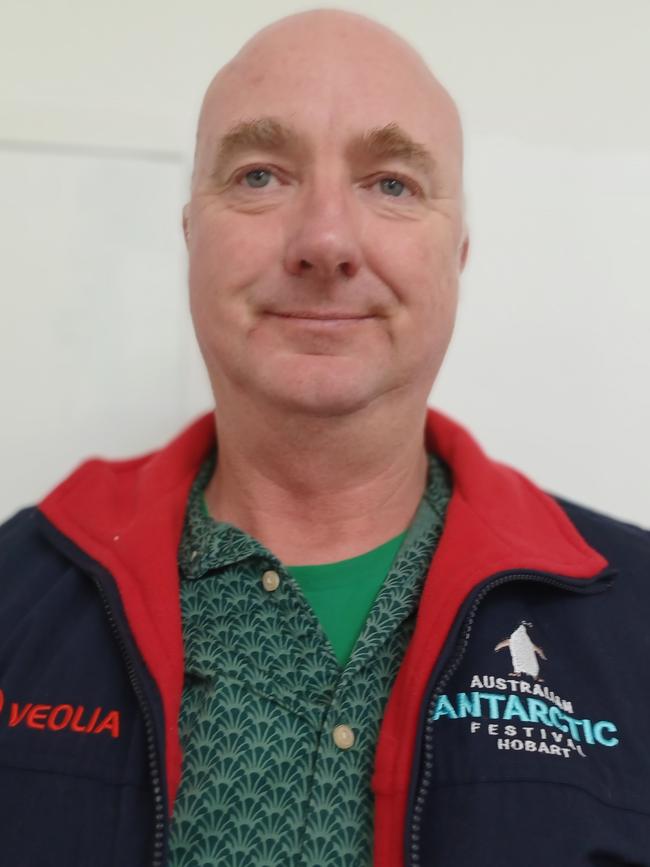
ANDREW BRASSINGTON
Andrew Brassington completed a science degree at university but decided to instead follow a career path as a circus performer and events co-ordinator.
However, his love of science and events came together perfectly when he became involved with the inaugural Australian Antarctic Festival in 2016.
Brassington, 52, previously worked for various organisation, including Salamanca Arts Centre and as entertainment co-ordinator for The Taste of Tasmania.
This year’s Antarctic festival, which offers a wide range of events spread across five days, aims to be enjoyed as a walking tour of Hobart. Festivalgoers can wander Hobart’s waterfront, from Salamanca Arts Centre to Princes Wharf No. 1 and across to MAC2, with various stopovers along the way at locations including the Tasmanian Museum and Art Gallery, the Maritime Museum of Tasmania, and Mawson’s Huts Replica Museum.
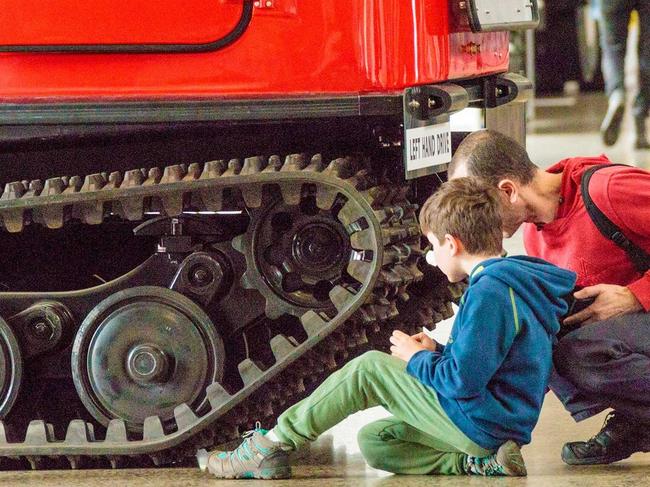
A free Antarctic Expo at Princes Wharf 1 runs on Friday August 26 (from noon to 4pm), Saturday August 27 and Sunday August 28 (from 10am-4pm), showcasing the big equipment used in Antarctica made by Tasmanian companies including Elphinstone Engineering and William Adams Tractors. There will also be displays from companies and agencies that work in Antarctica, including the Australian Antarctic Division and the Australian Defence Force.
Brassington, who hasn’t yet visited Antarctica but has it on his bucketlist and hopes to fly over the icy continent later this year, refers to the expo as “the candy shop of Antarctica”. Visitors are able to get a close look at tractors, boats, helicopters and all-terrain vehicles and speak to expeditioners about life in Antarctica.
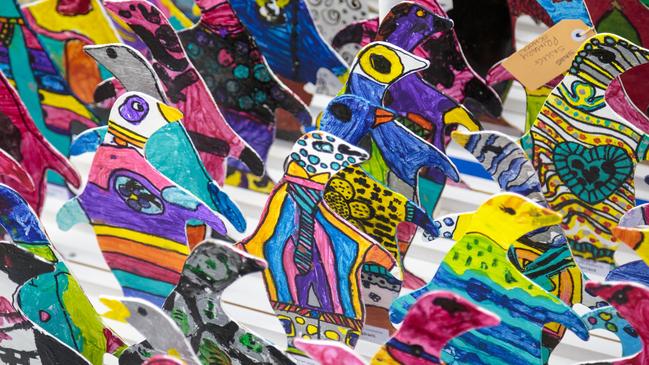
There’s also an Antarctic Stamp and Postcard Exhibition at Princes Wharf 1, while at the Allport Library and Museum of Fine Arts the Chilled: Antarctic Life – Inside and Out exhibition offers an insight into the lives of Antarctic expeditioners.
A photographic exhibition will also be held at TMAG’s Bond Store, showcasing images taken by expeditioners at Cape Denison during Mawson’s Huts Foundation’s most recent conservation expedition. The Bond Store will also be home to Antarctica: A Portrait of Solitary Beauty, featuring two audio visual installations presented by The Embassy of the Kingdom of the Netherlands.
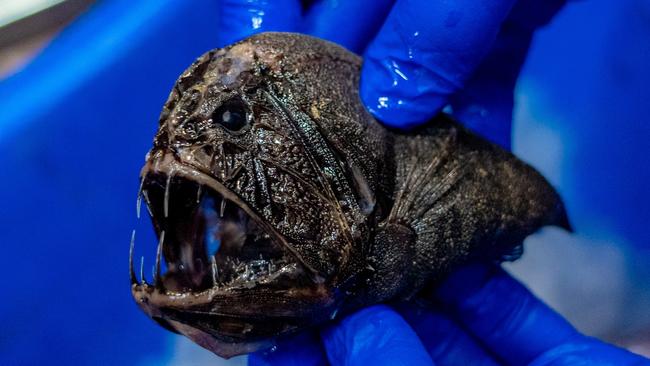
The Call of Aurora chamber opera will be performed at Salamanca Arts Centre’s Peacock Theatre from August 25-27 and is based on Sir Douglas Mawson’s expedition to Antarctica.
Children’s author Alison Lester will be artist-in-residence at the Penguin Rookery at MAC2 from August 25-28, where children can decorate a penguin to add to the colourful penguin mural. Children at 150 schools were sent 50 Adelie penguins each to paint and return to the festival, and it is expected more than 8000 handpainted penguin cut-outs by Australian and international schoolchildren will be on display at MAC2 during the festival.
Meanwhile the lawns of the Mawson’s Huts Replica Museum will host a family fun day/huskies picnic on Sunday, August 28, from 10am-5pm, where people can tour the museum and meet working sled dogs.
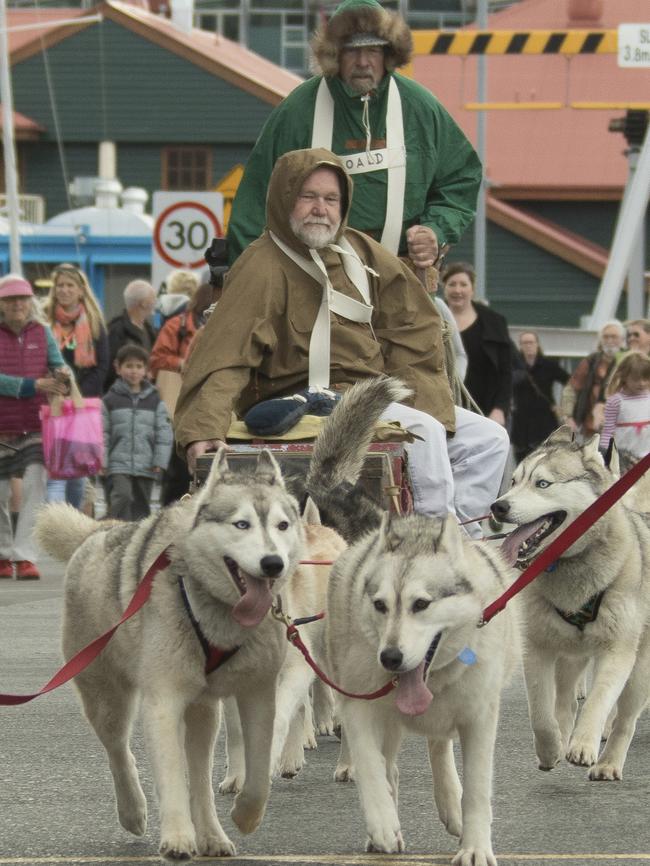
Brassington says despite Hobart being Australia’s Antarctic gateway, many Tasmanians don’t fully understand exactly how integral Hobart is in Antarctic explorations or what actually happens in Antarctica.
“I think it’s a hidden industry,’’ he says of Tasmania’s strong Antarctic presence.
“Unless you know someone or you’re involved directly you wouldn’t necessary know (about the many organisation involved and what they actually do in Antarctica).
“The aim of the festival is to come together and show the sector as a whole.’’

GREG CARTER
Greg Carter has visited Antarctica more than a dozen times. And he felt that Antarctica – and Hobart’s unique position as Australia’s Antarctic gateway – deserved to be celebrated. Which is why he and other board members of the Mawson’s Huts Foundation decided to establish the Australian Antarctic Festival back in 2016.
Now the chair of the Australian Antarctic Festival and chief executive of Mawson’s Huts Foundation, the 44-year-old says the festival is a great way to celebrate local organisations such as the CSIRO, Australian Antarctic Division, the University of Tasmania’s Institute for Marine and Antarctic Studies, the Tasmanian Museum and Art Gallery, the Maritime Museum of Tasmania and others who have an interest in the state’s Antarctic history and exploration.
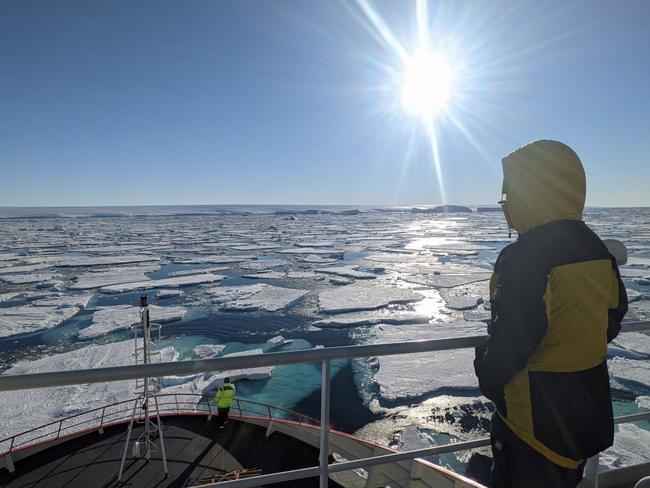
He says Hobart has one of the highest rates of scientists per capita in the world, particularly when it comes to Southern Ocean and Antarctic science.
Hobart is one of five global gateway cities to Antarctica, the others being Cape Town in South Africa, Christchurch in New Zealand, Punta Arenas in Chile and Ushuaia in Argentina. Figures show the Antarctica sector contributed $158.7m to the Tasmanian economy in 2019-20, with expenditure levels and employment levels continuing to rise annually.
Antarctica and the surrounding Southern Ocean are key drivers of the Earth’s oceanic and atmospheric systems, making it an important centre for scientific research.
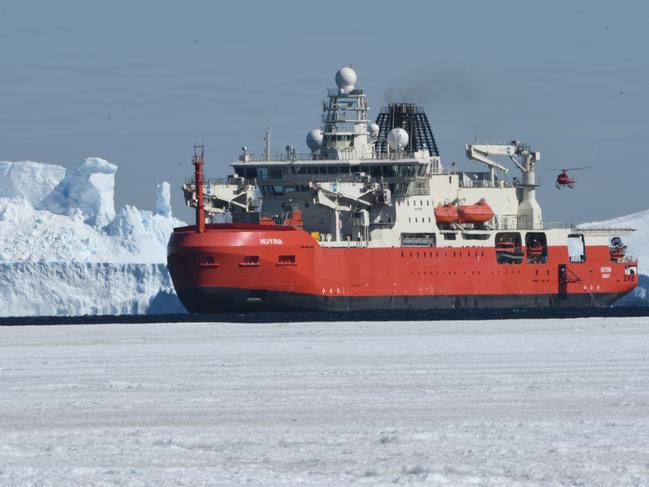
The festival is also a way to educate members of the public about the work of the Mawson’s Huts Foundation, which was established as a not-for-profit organisation in 1996 to conserve the historic huts at Cape Denison. Built during the 1911-14 Australasian Antarctic Expedition led by Sir Douglas Mawson, the huts are regarded as the birthplace of Australia’s Antarctic heritage and are protected by national and international law.
The foundation has funded and organised 14 major expeditions to Cape Denison and has operated the Mawson’s Huts Replica Museum on Hobart’s waterfront since 2013.
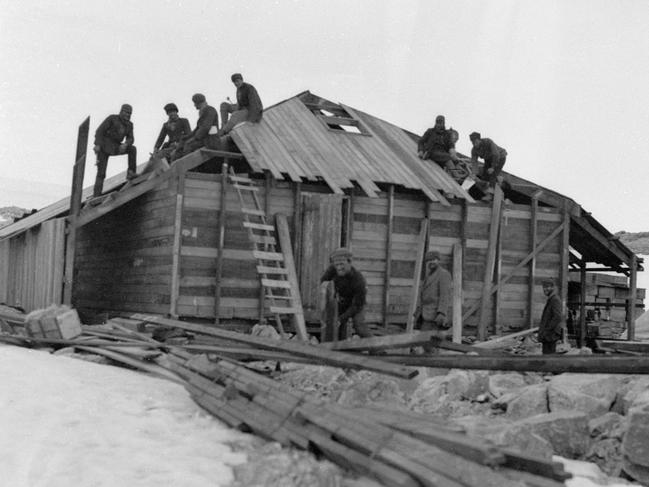
Carter, who is based in Sydney, started a polar adventure travel company, Chimu Adventures, about 15 years ago and went to Antarctica for the first time in 2007.
He no longer owns that company but now works for Danish cruise company Albatros Expeditions, which runs trips to Antarctica.
He recalls one of his earlier trips to Antarctica where an 82-year-old man he was travelling with – who had long desired to visit the icy continent – burst into tears during his visit, declaring that “it was the only place on the planet that we haven’t messed up yet’’.
Carter says that comment really struck a chord with him, and he’s buoyed by the spirit of the many organisations working together to protect and conserve this beautiful and remote region of the world.
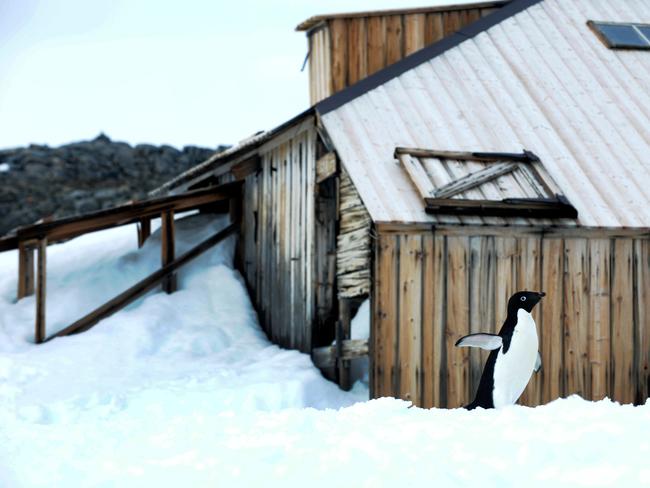
Many people dream of visiting Antarctica but may never get the chance to go there, so the festival is a great way to introduce them to scenery, the science and the history of the place.
Festivals were held in 2016 and again in 2018, but the 2020 festival had to be cancelled due to the Covid-19 pandemic.
However this year’s festival offers a bumper program of mostly-free events to suit a wide range of interests.
Carter has a history degree and is passionate about the arts and using them to promote and tell the stories of our polar history.
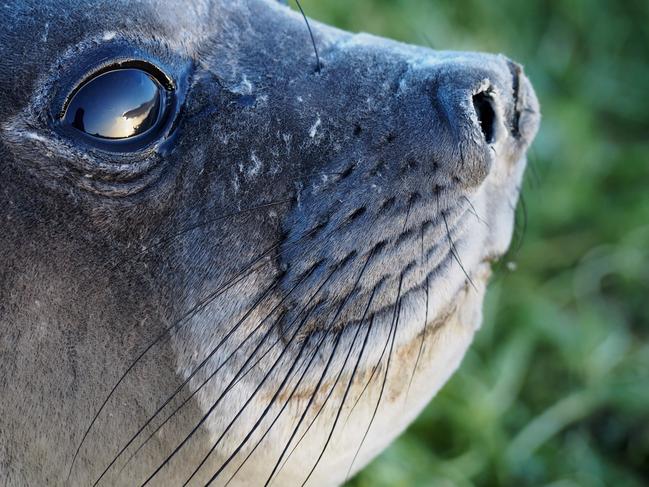
He says there’s something fascinating about Antarctica, that captures people’s imaginations, and telling people that he’s visited multiple times prompts plenty of curiosity.
“Generally it does spark a lot of conversations,’’ he says.
“People have lots of questions. It’s a fascinating industry, I absolutely love it.
“We’ve got a really varied festival program, with art, opera, photography, science, history … it really is a great opportunity to celebrate Hobart as Australia’s Antarctic gateway.’’
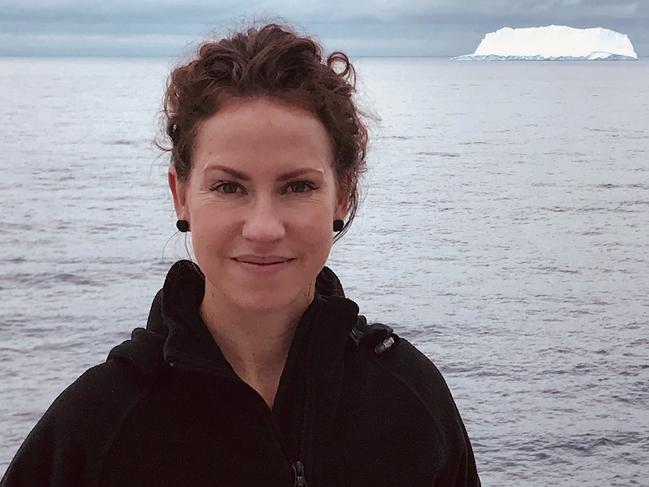
TEGAN SIME
You can watch as many documentaries as you like, but Tegan Sime says nothing can prepare you for your first visit to Antarctica.
Currently a voyage manager on CSIRO’s ocean research vessel RV Investigator, Sime joined the crew in 2014 when the vessel was first commissioned and did her first Antarctic voyage in 2018. She says it’s an experience that is forever etched in her mind.
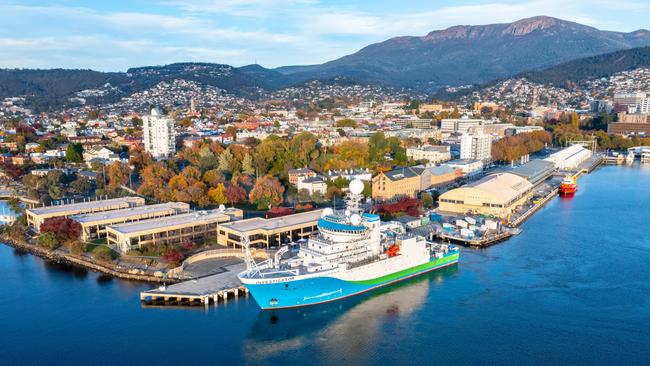
The 40-year-old’s job is to be the key liaison between the crew of the 94m ship and the science team, ensuring everyone onboard works together to achieve all the scientific objectives during each voyage. She also considers herself somewhat of an amateur counsellor, offering support to voyagers during long stints at sea. Sime has done 22 voyages on RV Investigator, and has spent more than 320 days at sea.
The vessel supports biological, oceanographic, geological and atmospheric research, as well maritime training and education and can accommodate 40 researchers and technicians and 20 crew. It can travel for up to 60 days and cover 10,000 nautical miles without resupply.
The ship will not be in Hobart for the Australian Antarctic Festival, but festivalgoers will have the chance to learn about various research vessels and icebreakers as well tour Australian Navy ship HMAS Brisbane.
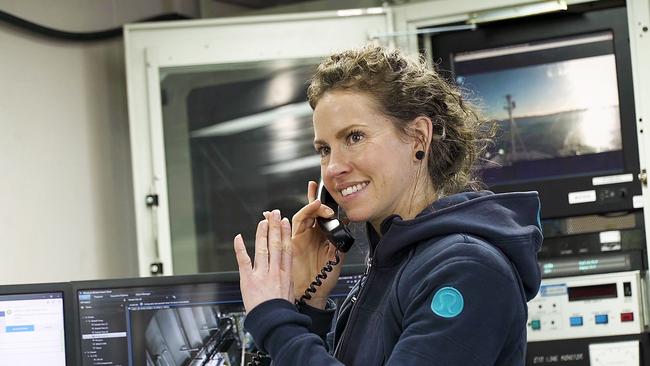
Sime loves being in the middle of the ocean, working as a team and being part of the “amazing” scientific discoveries that happen on-board.
She’s also captivated by the “incredible” scenery which is more amazing than she could ever have imagined.
“I love it, I absolutely love it,’’ she says of her job. “There’s absolutely nothing like it. You can see all the documentaries in the world but to actually be down there and experience it, and experience that level of cold … it’s amazing how your scalp can feel so cold and your ears feel so icy if you’re not covered up properly.
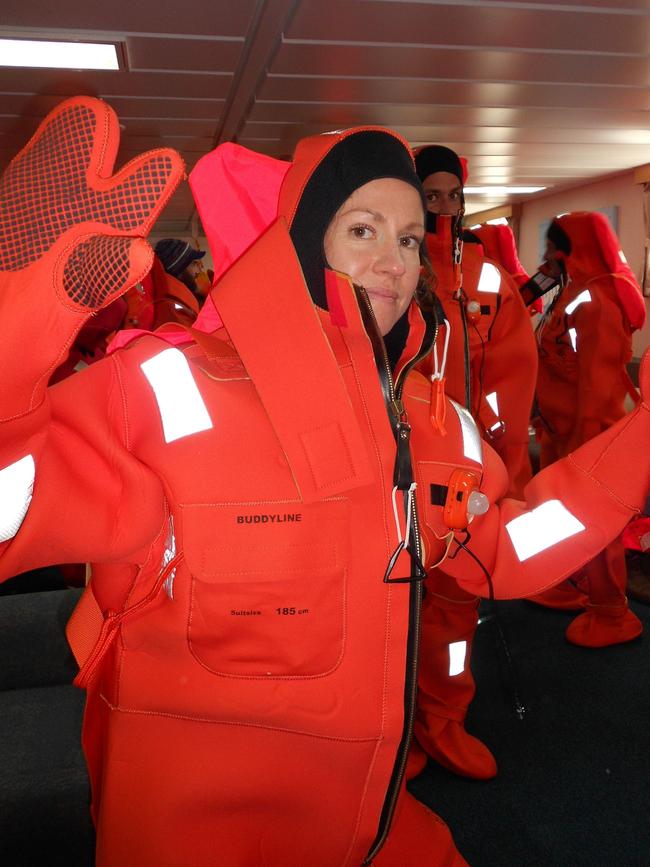
“One of the most exciting things was definitely seeing that first iceberg. They were small at first but we saw them grow in size, it was spectacular. Then all around you’re seeing icebergs. The colours and the shapes as well, it’s just kind of gobsmacking, you just have a silly grin on your face the whole time. It’s just really cool, seeing penguins and whales and bird life and everything – it’s just spectacular.’’
She was lucky enough to celebrate her 36th birthday during that first Antarctic voyage and nature put on an unforgettable show for her.
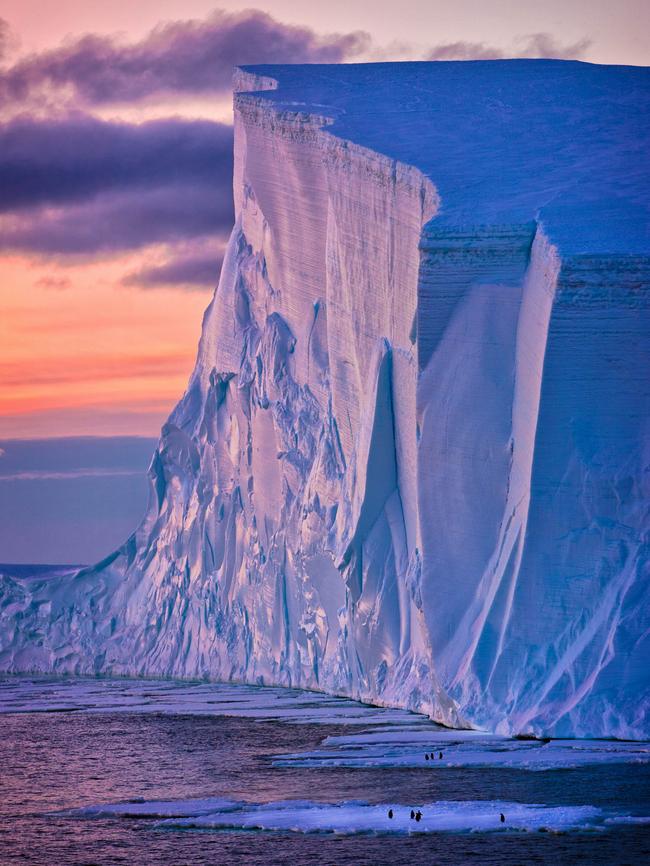
“I was down near the ice edge in the Antarctic and I woke up at about 3am and it was pitch black outside but I just peeked through my curtains and I could see the aurora (australis) lighting up the sky,’’ she recalls.
“I raced up to the bridge, and there were a couple of people up there that were taking photos and footage, and they all started singing happy birthday to me under the aurora and it was a really special experience.’’
Although she’s well settled in her career now, Sime says it wasn’t always the case. Originally from Canberra but now based in Hobart, Sime didn’t know what she wanted to do when she finished school.
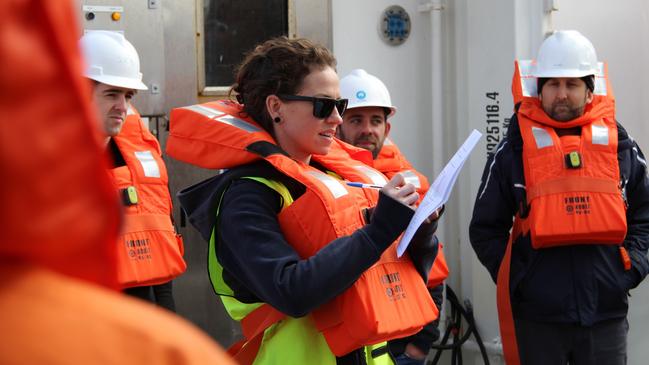
She started volunteering at a sailing school, then did a voyage on tall ship Young Endeavour and quickly fell in love with life at sea.
At 23 she went to uni – after repeating year 12 to get the grades she needed to study marine science. As part of her studies she spent some time on the CSIRO’s previous research vessel, Southern Surveyor, and got a job on the new RV Investigator when it began operating.
“I’ve always been drawn to roles that have been in more extreme environments, that have been more challenging – sometimes it’s not that comfortable, it’s not that glamorous but there’s adventure, there’s excitement,’’ Sime says.
“When you’re in the middle of the ocean it’s kind of you against the elements, we’re all there as a team working towards a common goal and it’s really lovely actually.’’
“There’s a really nice kind of friendship and rapport you develop over the course of voyages.’’
The Australian Antarctic Festival runs from August 24-28 at various locations across Hobart. Find out more at mawsons-huts.org.au

Passionate Tassie adventurer embraces epic challenges
Adventurer, environmental economist and all-round go-getter – Tassie’s Tim Harmsen is on a mission to revive one of Tasmania’s toughest winter races... while also adding a quirky new twist
Romance boom: Tassie author pens 100th book
Tasmania’s Ris Wilkinson became an author at 44 with romance juggernaut Mills & Boon. At 66, she’s penning her 100th book as Melanie Milburne – as writers converge on Hobart for a national event.